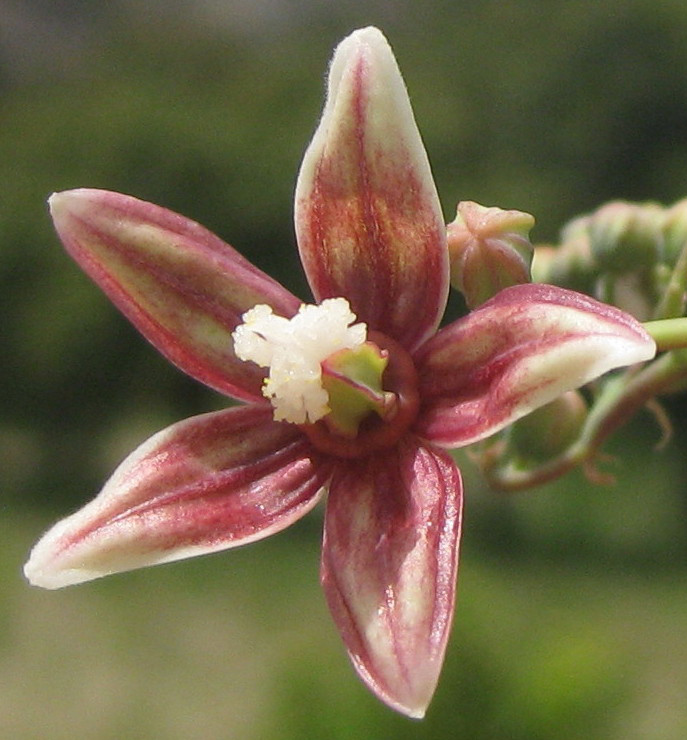Genus Abelmoschus
Taxonomy and Classification
- Kingdom: Plantae
- Clade: Angiosperms
- Clade: Eudicots
- Clade: Rosids
- Order: Malvales
- Family: Malvaceae (mallow family)
- Genus: Abelmoschus
The Abelmoschus genus was previously included in the genus Hibiscus due to its similar characteristics but was later separated based on differences in floral structure and fruit characteristics. The name "Abelmoschus" is derived from the Arabic "abu-l-mosk," meaning "father of musk," a reference to the musky scent of the seeds in some species.
2. Morphological Characteristics
- Growth Habit: Members of the genus are herbaceous plants, typically growing as annuals or short-lived perennials. They can reach heights of 0.5 to 3 meters, depending on the species.
- Leaves: The leaves are lobed and often large, sometimes reaching up to 30 cm in length. They are palmately lobed or deeply dissected, giving the plant a bushy appearance.
- Flowers: The flowers are showy, large, and often resemble those of the Hibiscus species. They are usually yellow with a dark center, though some species have white or pink flowers. The flowers are bisexual and radially symmetrical, with five petals and prominent stamens.
- Fruit: The fruit is an elongated capsule (often called a pod), containing numerous seeds. In edible species like A. esculentus (okra), the pods are harvested before they mature and become fibrous.
- Seeds: Seeds are round or kidney-shaped and, in some species, produce a musky fragrance.
3. Notable Species
- Okra (Abelmoschus esculentus)
- Most widely known species, cultivated for its edible green pods.
- The mucilage in okra pods is used to thicken soups and stews.
- High in fiber, vitamins (such as vitamin C and K), and antioxidants.
- Musk mallow (Abelmoschus moschatus)
- Known for its musky-scented seeds, which are used in perfumes and traditional medicine.
- Seeds are also used as a substitute for animal musk in fragrances.
- West African okra (Abelmoschus caillei)
- Grown mainly in West Africa, it is similar to A. esculentus but is more tolerant to the region's environmental conditions.
4. Distribution and Habitat
- Native Range: The genus is believed to originate in tropical Asia and Africa. Some species have been domesticated for centuries, and their exact origin is challenging to pinpoint.
- Cultivated Areas: Today, Abelmoschus species, particularly A. esculentus, are cultivated in warm, tropical, and subtropical regions worldwide. Major producers include India, Nigeria, Sudan, Egypt, and the southern United States.
- Habitat Preferences: These plants generally prefer well-draining soils with a slightly acidic to neutral pH. They thrive in regions with warm temperatures and ample sunlight.
5. Uses
- Culinary Uses:
- Abelmoschus esculentus (okra) is used in various culinary traditions, especially in dishes such as gumbo, curries, and soups.
- The immature pods are consumed, while the seeds can be dried and ground into flour or used for oil extraction.
- Traditional Medicine:
- In some cultures, okra is used for its supposed medicinal properties, including aiding digestion, lowering blood sugar, and reducing cholesterol.
- A. moschatus seeds are used in traditional Indian medicine (Ayurveda) for their aphrodisiac and diuretic properties.
- Industrial Uses:
- The seeds of A. moschatus, due to their musk-like fragrance, are utilized in the perfume industry as a fixative.
- Okra mucilage is sometimes used in paper manufacturing and as a biodegradable agent for water purification.
6. Cultivation Practices
- Climate Requirements: Warm temperatures (20-30°C) are ideal for growing Abelmoschus. They are frost-sensitive and require a long growing season.
- Soil Preparation: These plants grow best in fertile, well-draining soil with a pH range of 6.0 to 7.5. Adding organic matter improves soil fertility.
- Propagation: Seeds are sown directly in the field. Soaking seeds in warm water before planting can improve germination.
- Watering and Fertilization: Moderate watering is necessary, particularly during dry spells. Nitrogen-rich fertilizers help promote vigorous growth.
- Pests and Diseases: Common pests include aphids, caterpillars, and beetles, while fungal diseases like powdery mildew and root rot can affect the plants.
7. Phytochemistry
- Abelmoschus species contain various bioactive compounds, such as:
- Flavonoids and polyphenols: Known for antioxidant properties.
- Mucilage: High polysaccharide content in okra pods is used for medicinal and industrial applications.
- Essential oils: Especially from A. moschatus seeds, used in aromatherapy and perfumery.
8. References for Further Reading
- Botanical Reference:
- Bates, D. M. (1968). "Notes on the Cultivated Malvaceae." Economic Botany, 22(3), 167-178.
- Phytochemistry:
- Kumar, S., & Kumar, V. (2009). "Phytoconstituents and biological activities of Abelmoschus moschatus: A review." Der Pharmacia Lettre, 1(2), 118-128.
- Agronomy and Cultivation:
- Singh, M., & Bhatnagar, N. (1975). "Studies on okra (Abelmoschus esculentus L. Moench) mucilage: Part I." Plant Foods for Human Nutrition, 25(2), 73-77.
- Ethnobotany and Traditional Uses:
- Kapoor, L. D. (2001). Handbook of Ayurvedic Medicinal Plants: Herbal Reference Library. CRC Press.

A. esculentus

A. manihot
VARIETIES
- A. esculentus
- A. manihot
- A. moschatus




